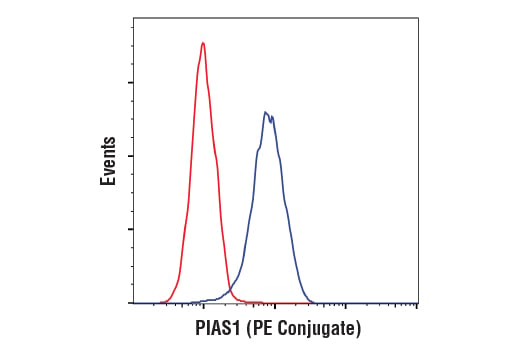The protein inhibitor of activated Stat (PIAS) proteins, which include PIAS1, PIAS3, PIASx, and PIASy, were originally characterized based on their interaction with the Stat family of transcription factors (1,2). PIAS1, PIAS3, and PIASx interact with and repress Stat1, Stat3, and Stat4, respectively (1-3). Deletion of PIAS1 leads to inhibition of interferon-inducible genes and increased protection against infection (4). The PIAS family contains a conserved RING domain that has been linked to a function as a small ubiquitin-related modifier (SUMO) ligase, coupling the SUMO conjugating enzyme Ubc9 with its substrate proteins (5,6). Numerous studies have now shown that PIAS family members can regulate the activity of transcription factors through distinct mechanisms, including NF-κB (7,8), c-Jun, p53 (5,9), Oct-4 (10), and Smads (11,12). The activity of PIAS1 is regulated by both phosphorylation and arginine methylation. Inflammatory stimuli can induce IKK-mediated phosphorylation of PIAS1 at Ser90, which is required for its activity (13). In addition, PRMT1 induces arginine methylation of PIAS1 at Arg303 following interferon treatment and is associated with its repressive activity on Stat1 (14).
1.Liu, B. et al. (1998) Proc Natl Acad Sci USA 95, 10626-31.
2.Chung, C.D. et al. (1997) Science 278, 1803-5.
3.Arora, T. et al. (2003) J Biol Chem 278, 21327-30.
4.Liu, B. et al. (2004) Nat Immunol 5, 891-8.
5.Schmidt, D. and Müller, S. (2002) Proc Natl Acad Sci USA 99, 2872-7.
6.Kotaja, N. et al. (2002) Mol Cell Biol 22, 5222-34.
7.Liu, B. et al. (2005) Mol Cell Biol 25, 1113-23.
8.Tahk, S. et al. (2007) Proc Natl Acad Sci USA 104, 11643-8.
9.Bischof, O. et al. (2006) Mol Cell 22, 783-94.
10.Tolkunova, E. et al. (2007) J Mol Biol 374, 1200-12.
11.Long, J. et al. (2004) Proc Natl Acad Sci USA 101, 99-104.
12.Murdoch, R.N. and Edwards, T. (1992) Biochem Int 28, 1029-37.
13.Liu, B. et al. (2007) Cell 129, 903-14.
14.Weber, S. et al. (2009) Genes Dev 23, 118-32.
 全部商品分类
全部商品分类























 用小程序,查商品更便捷
用小程序,查商品更便捷




